With closed eyes and headphones, a young woman sits at the keyboard and composes. The sounds flow out of the instrument as curved, colored lines, it is a moment of devotion to the art. But then the bubble deflated.
“Mama?” The artist’s little son is standing in front of her with a dripping shirt. She gets up, puts a new one on him, takes care of it. When the first sounds begin to flow again, they immediately fall apart again. “Mom?” The pants are wet. Crouching in front of the washing machine, the mother’s first stress is noticeable, and the teenage daughter gets the frustration.
The task she faces – as a single parent of two children to compose a piece for an important competition within a week – appears in the plot of the graphic novel “The period” author and comic artist Lisa Frühbeis, which will be published by Carlsen Verlag at the end of May, is becoming increasingly impossible.
Awarded as best webcomic
Already in 2021 the comic was published under the title “A fraction of time” published as a webcomic on the “Tapastic” platform and received the award for best webcomic at the Ginco-Award 2022.
In impressive pictures drawn with black ink and watercolor, Lisa Frühbeis tells the story of the single mother who, having been fired from her apartment, travels with her children to an island in the Norwegian Lofoten Islands and tries to work in a relative’s tiny holiday home.
Time seems to stand still in the landscape. The lines of the small islands in front of the line of the horizon come together atmospherically in peaceful watercolor scenes. The flowing shades of gray contrast with clearly defined black outlines and white areas. In the Tiny House, on the other hand, chaos soon rages.
Burnout seems inevitable
The balancing act between the requirement and the need to earn money with an artistic profession on the one hand and the desire to be a good mother on the other is so great that it threatens to tear the woman apart. She is alone with her worries and problems.
The father of the children is no help, the mother of the single parents has no understanding for the artistic work of the daughter and is also in a care work trap with her husband who needs care. The deadline is approaching, the burnout, it seems, is programmed.
Gateway to another world
But when the pressure becomes unbearable, the woman suddenly opens a door to another world. In the form of an anthropomorphic monster, she leaves everything behind. With its vulva shape, the gate suggests that the woman stepping through longs for the carefree state of an unborn child.
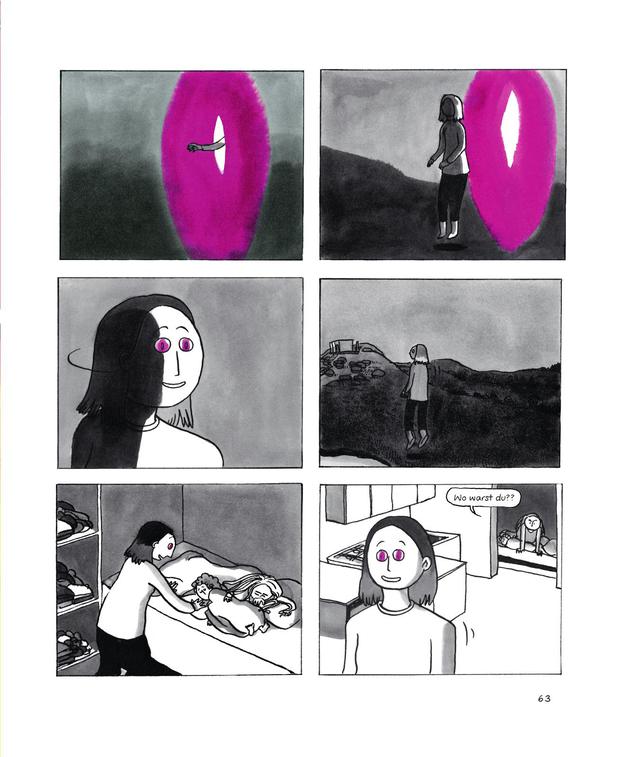
But she is already a mother herself, there is no turning back, and there is no question of whether she wants to live like this. Only the question of how – how she can do it all. The answer is as simple as it is relentless: “So hard… But I have to!”
“The Time Period” takes up problems that women and mothers in particular are still confronted with today – and with which they are largely left alone politically and socially. With the spread of terms such as mental load and care work, especially during the pandemic, attention was paid to the massive overload and multiple burdens on mothers.
Unequal distribution of care work
During the school and daycare closures, even in families with fathers, in addition to wage work, they largely had to worry about the children, as illustrated by the illustrator Aubrey Hirsch in 2020 in her comic article “The hell that is remote learning, explained in a comic” in the American online news portal Vox.com.
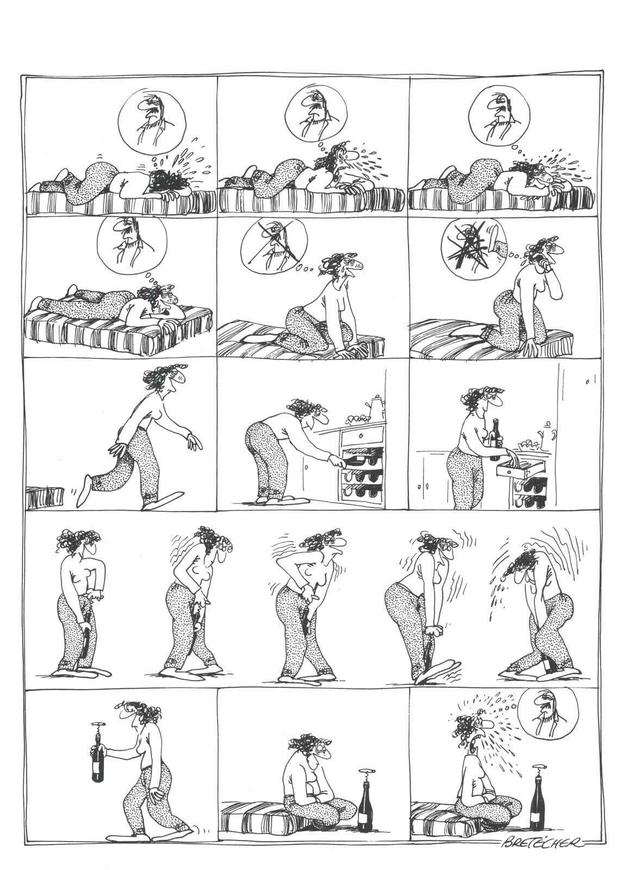
The unequal distribution of care work was already denounced in the 1970s by the French illustrator Claire Bretécher in her feminist cult comics from the series “The Frustrated” (a complete edition was published by Carlsen in 2022). The mental load at the expense of mothers, despite better knowledge and diverse possibilities for change, stubbornly persists as a norm in the collective consciousness.
An issue more and more often
In comics, however, mothers, motherhood and dealing with mother roles are increasingly being addressed, which could also be due to the fact that more and more outstanding works by female comic creators are being published and are attracting attention with prizes and nominations.
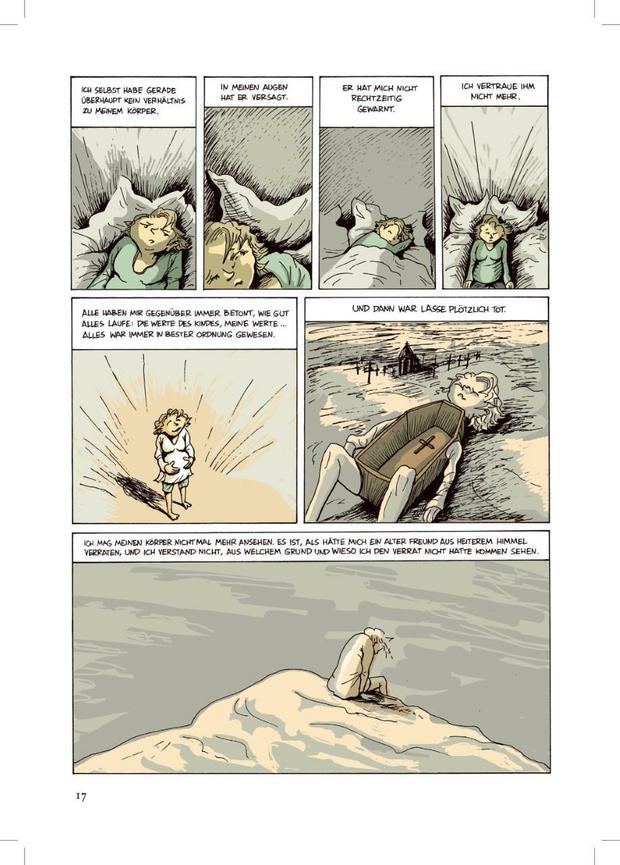
From the first-person perspective, Alice Socal, for example, describes her emotions during pregnancy in “How long still?” (published by Rotopol in 2022) – and her fears that as a mother she will no longer be able to work artistically. In her award-winning graphic novel “The light that empties shadows”, Tina Brenneisen tells of the death of her unborn child and how she comes to terms with the bottomless grief.
In her strip collection of quirky everyday situations, “In the Eternal Circle”, which was published by Avant Verlag in March, Christiane Haas often comes across people with children in whom other people, including strangers, think they know what the (expectant) mother is just doing wrong.
hormone-controlled beings
Dorothea Huber also observes her body and the growth in her belly with a lot of humor in “Aus Mutters Mund” (published in 2022 by Jaja-Verlag) and unmasks some grotesque moments from the sometimes irritating world in which pregnant women often find themselves – be it during pregnancy yoga or when they are suddenly reduced to hormone-controlled beings without free will.
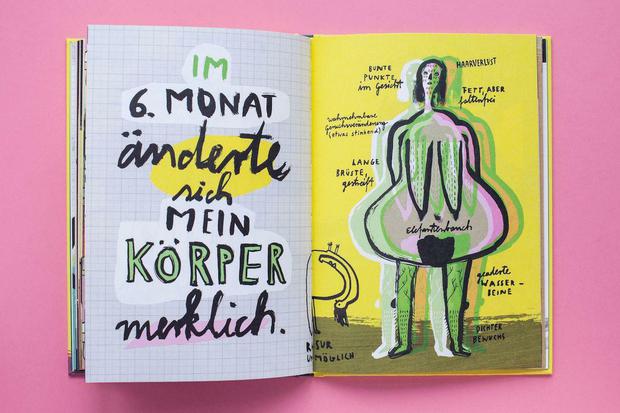
Other authors and illustrators, on the other hand, also look at negative mother perspectives. For example, the Japanese Shuzo Oshimi in his manga series “Blood on the Tracks”, in which the toxic mother-son relationship leads to a dark secret. In “Schattenmutter” (published in 2021 by Edition Moderne), the Swiss Stefan Haller looks at his childhood with the help of the diaries of his mentally ill mother.
In “Hort” (published in 2022 by Edition Moderne), the Hamburg comic artist Marijpol includes three neglected children in the repertoire of her protagonists, who live in a neglected apartment and whose mother is consistently absent during the plot. At the same time, however, she poses the question of what constitutes femininity and what social expectations and desires of motherhood and femininity prevail.
Precarious living conditions
The Belgian Judith Vanistendael asks similar questions in her graphic novel “Penelope’s Two Lives” (released by Reprodukt in 2021) about a doctor who wears herself out in a Syrian field hospital and is less and less involved in the life of her daughter at home in Belgium. In her disturbing book “The Unknown”, Swiss author Anna Sommer develops a silent drama about an unfulfilled desire to have children and an unwanted pregnancy.
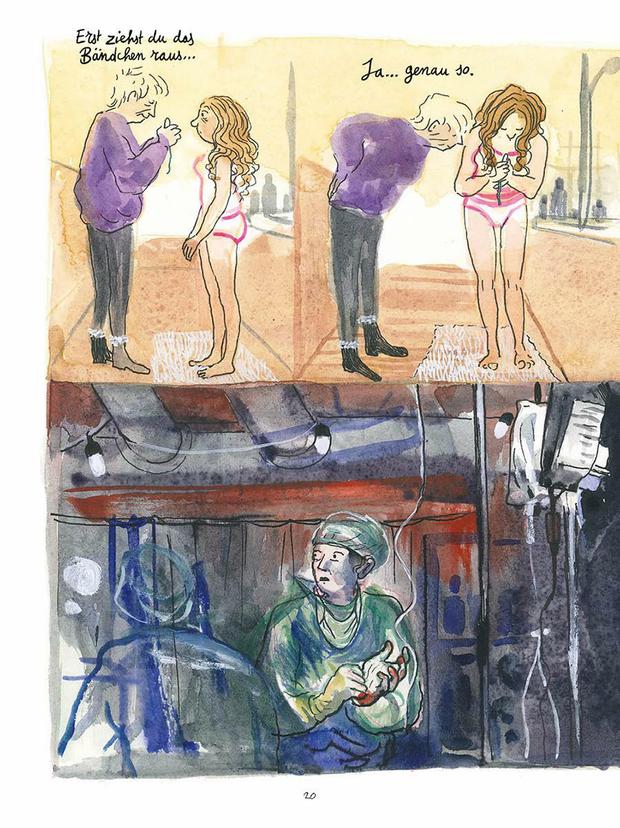
The balancing act between artistic work and care work as a mother is a topic that has so far hardly been present in published comics and graphic novels – as well as in other artistic media.
The demands of the comics union, founded in 2022, show how relevant and important a debate about this is, which refers to the precarious living conditions of artists’ parents, whose existence pressure increases with concern for their children. They also show how much, for example, comic creators are disadvantaged as parents when awarding residency grants – and thus have less access to important funding and professional impulses.
The perspective of a single mother has also not been artistically processed to date. However, this could change with a view to the numbers of single parents. According to the Federal Ministry for Family Affairs, Senior Citizens, Women and Youth, 18 percent of children in Germany live with only one parent in the household – which in 90 percent of cases is the mother.

In the comic, the actress Emilia Clarke, known as the dragon whisperer Daenerys Targaryen in the fantasy hit series “Game of Thrones”, made a foray into this: In “MOM: Mother of Madness” (in German published by Carlsen in March 2023) she makes one single mom turned superhero who battles toxic masculinity and female oppression – using her hormones before, during and after her period.
The comic takes place in the near future. Maybe by then we will live in a world in which superheroes are no longer needed and women don’t have to tear themselves apart, but can be both: artists and good mothers. It would be possible.
